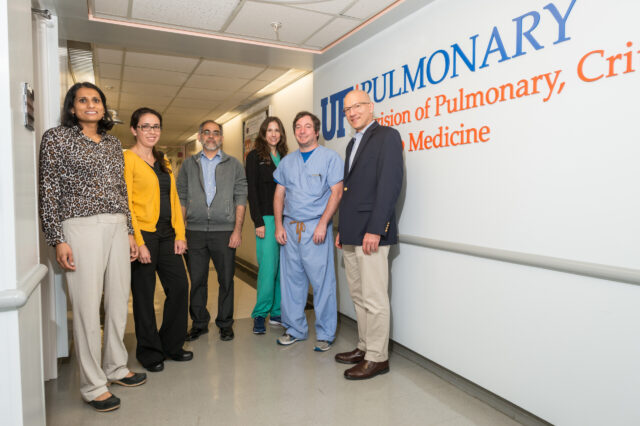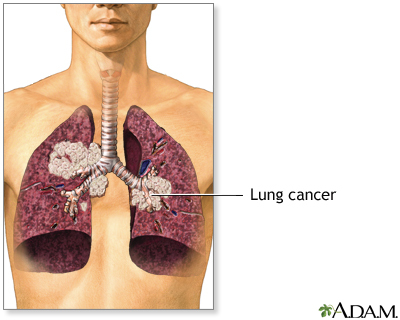Patient education
Our exceptional foundation of physicians and state-of-the-art methods, like XVIVO and intensity-modulated radiation therapy, to diagnose and treat complex lung diseases makes pulmonology care a hallmark of UF Health.

Definition
Lung disease is any problem in the lungs that prevents the lungs from working properly. There are three main types of lung disease:
- Airway diseases -- These diseases affect the tubes (airways) that carry oxygen and other gases into and out of the lungs. They usually cause a narrowing or blockage of the airways. Airway diseases include asthma, chronic obstructive pulmonary disease (COPD), bronchiolitis, and bronchiectasis (which also is the main disorder for persons with cystic fibrosis). People with airway diseases often say they feel as if they're "trying to breathe out through a straw."
- Lung tissue diseases -- These diseases affect the structure of the lung tissue. Scarring or inflammation of the tissue makes the lungs unable to expand fully (restrictive lung disease). This makes it hard for the lungs to take in oxygen and release carbon dioxide. People with this type of lung disorder often say they feel as if they are "wearing a too-tight sweater or vest." As a result, they can't breathe deeply. Pulmonary fibrosis and sarcoidosis are examples of lung tissue disease.
- Lung circulation diseases -- These diseases affect the blood vessels in the lungs. They are caused by clotting, scarring, or inflammation of the blood vessels. They affect the ability of the lungs to take up oxygen and release carbon dioxide. These diseases may also affect heart function. An example of a lung circulation disease is pulmonary hypertension. People with these conditions often feel very short of breath when they exert themselves.
Many lung diseases involve a combination of these three types.

The most common lung diseases include:
- Asthma
- Collapse of part or all of the lung (pneumothorax or atelectasis)
- Swelling and inflammation in the main passages (bronchial tubes) that carry air to the lungs (bronchitis)
- COPD
- Lung cancer
- Lung infection (pneumonia)
- Abnormal buildup of fluid in the lungs (pulmonary edema)
- Blocked lung artery (pulmonary embolus)
Managing COPD Quiz
Gallery







References
Clifton IJ, Ellames DAB. Respiratory medicine. In: Penman ID, Ralston SH, Strachan MWJ, Hobson RP, eds. Davidson's Principles and Practice of Medicine. 24th ed. Philadelphia, PA: Elsevier; 2022:chap 17.
Kraft M. Approach to the patient with respiratory disease. In: Goldman L, Schafer AI, eds. Goldman-Cecil Medicine. 26th ed. Philadelphia, PA: Elsevier; 2020:chap 77.